
Roswell, New Mexico
Visiting Roswell
I went to Roswell for the October 2023 annular solar eclipse.
I observed the eclipse from its centerline where
it passed close to Roswell.
What could be a better place for observing
unusual events in the sky?
Roswell is best known now for the July 1947
Roswell Incident
in which a military spy balloon (or weather balloon,
or extraterrestrial craft)
crashed nearby (or about 140 kilometers to the northwest),
depending on your sources.
The summer of 1947 was a strange time of public hysteria.
Roswell played a prominent role in the origins of
nuclear war preparation by the U.S. Army Air Force,
which was replaced by the U.S. Air Force
in September, 1947.
It was home to one of the first,
and at the time the largest,
Strategic Air Command base.
Before that, through the 1930s,
much of Robert H. Goddard's rocket development and testing
had occurred here.

1:500,000 scale Tactical Pilotage Chart ONC G-19C from the Perry-Castañeda Library Map Collection at the University of Texas at Austin. The former Roswell Army Air Field (1941–1948) and Walker Air Force Base (1948–1967), now the Roswell International Air Center, is visible a short distance south of the city.
Here's the "Welcome to Roswell" sign beyond the north edge of town along US 285. Cattle abduction! There's little new or Roswell-specific about mysterious livestock mutilation, as The Court and Times of James the First describes mysterious slaughters in London in 1606:
We have been here very much troubled with an accident fallen out, and yet by no means can be discovered, about the city of London and some shires adjoining unto it. Whole slaughters of sheep have been made, in some places to the number of a hundred, in others less, where nothing is taken from the sheep but their tallow and some inward parts, the whole carcases and fleeces remaining still behind. Of this are sundry conjectures, but most agree that it tendeth towards some fireworks.

I appreciated all the historical markers throughout New Mexico. This one explains that Roswell's population is about 50,000, and the city was a watering place for Pecos Valley cattle drives through the 1870s and 1880s. The Pecos River flows north to south through here. Like the Rio Grande, across the mountains and Tularosa Basin, the Pecos has very little water flow compared to what I'm used to.

Coming from West Lafayette, Indiana, on the relatively large Wabash river, I was surprised to learn about the founding of Roswell.
Van C. Smith and his business partner Aaron Wilburn built two adobe structures in 1869, the first non-indigenous settlement of what is now Roswell. The two adobe buildings became the general store, post office, and sleeping quarters for paying guests. In 1871, Smith filed a federal claim for the land around the buildings, and on August 20, 1873, he became the town's first postmaster.
Smith named the town for his father, Roswell Smith, who was a prominent lawyer in Lafayette, Indiana. Roswell was named after a lawyer in Lafayette, Indiana.

I stayed at the National 9 Inn, along Main Street about a mile and a half north of the courthouse and the center of town. A nice place, walking distance to some restaurants and some sights at the center of town.

The neighboring Roswell Inn had more fully embraced the local trend toward extraterrestrial themed advertising.

New Mexico Military Institute
The New Mexico Military Institute is a military high school and junior college that was founded in 1891, twenty-one years before statehood.

Their list of notable alumni includes:
- Several professional football players,
- A few men described as heirs and socialites,
- Sam Donaldson of ABC News,
- A nude model and pornographic performer, and
- The actor Owen Wilson.


Robert Goddard
Robert Goddard was born in 1882 and grew up in Massachusetts. He completed a Ph.D. in physics at Clark University in Worcester in 1910, then went to Princeton University in New Jersey for a research fellowship. In 1912 he invented a vacuum tube with beam deflection, patenting it before Lee de Forest's similar invention.
Meanwhile, he was developing mathematical solutions for calculating the position and motion of a rocket in flight. His ultimate goal was space travel, but initially he only spoke and wrote about applying rockets to sounding flights to study the atmosphere and gather meteorological data. He had seen quite early that any mention of space flight led to ridicule.
Tuberculosis and the "Lungers" at Los AlamosIn early 1913 Goddard developed tuberculosis, as his mother had in 1898, as J. Robert Oppenheimer would in 1927, and as many others did through the late 19th and early 20th century before relocating to New Mexico in hope of a cure or at least easing of symptoms.
Goddard left Princeton and returned to Worcester to recuperate or, as his doctors expected, to die. By late 1914 he had recovered to the point that he accepted a part-time instructor and research fellow position at Clark University. Now he could get back to developing rockets.
"A Method of Reaching Extreme Altitudes"The Smithsonian Institution was a major sponsor of Goddard's early work. The Smithsonian published his paper "A Method of Reaching Extreme Altitudes" in 1919. It joined Konstantin Tsiolkovsky's 1903 "The Exploration of Cosmic Space by Means of Reaction Devices" as the pioneering works of modern rocketry.
In that work, Goddard described his experiments with solid fuel rocket motors, and how he applied steam turbine nozzles to increase his rocket motors' efficiency in converting chemical energy to kinetic energy from 2% to over 60%.
In following communication with the Smithsonian in 1920, Goddard discussed photographing the Moon and the other planets from rocket-powered probes, uses of solar energy by spacecraft, ablative heat shields for spacecraft re-entering the Earth's atmosphere, and high-velocity ion propulsion. He had built and tested an ion thruster in 1916–1917.
Goddard had been investigating liquid propellants since 1909. He realized that liquid hydrogen and liquid oxygen were the most efficient fuel–oxidizer combination. James Dewar had liquified hydrogen in 1898 by cooling it to 20.28 K at atmospheric pressure, and then frozen hydrogen into a solid at 14.01 K in 1899. However, liquid hydrogen wasn't practical when Goddard began his liquid-fuel experiments in 1921. So, he went with the much more manageable gasoline and liquid oxygen, which boils at 90.19 K.
Goddard began experimenting with static tests of liquid fuel rocket motors in 1923. He launched the world's first liquid-fuel rocket on 16 March 1926, in Auburn, Massachusetts. He soon discovered that simple fins were inadequate for stabilizing the direction of flight. He developed steerable vanes controlled by a gyroscope.
Goddard attracted the attention of Charles Lindbergh, who encouraged him, and the American press, which ridiculed him.
In 1930 the Guggenheim family began supporting Goddard, who moved to Roswell. A meteorologist had advised him that it would be a good location for experimenting with rocket flight. It was a similarly good location for me to observe the annular eclipse.
Goddard launched 35 rockets between 1926 and 1941, 31 of them after his move to Roswell in the summer of 1930. He and his technicians worked there in partial isolation and secrecy.
Robert Goddard and John "Jack" Parsons had similar experiences in their rocketry careers. The term "rocket" brought ridicule and assumptions of being a mad scientist, deluded and completely unrealistic.
Parsons had seen how Goddard was ridiculed for rocket work, and found that "jet" was a more respected concept. Parsons founded both Aerojet Engineering Corporation and what became NASA's Jet Propulsion Laboratory. The first of those manufactured rocket boosters to allow military aircraft to take off from short runways, the second designs and operates space probes that must be launched from Earth on large rockets. However, both organizations carefully used "jet" rather than "rocket" in the names and their projects.
Goddard also worked on JATO or Jet-Assisted Take-Off rocket motors during World War II.
The Roswell Museum, along Main Street north of the center, has a collection covering history, science and art. Outside, there's a replica of one of Goddard's rockets and launch towers, with a statue of him with one of his control panels.



German scientists were working on rocketry, and Goddard had initially corresponded with them. He stopped that around 1930 as Germany became increasingly militaristic. The Germans had read all of Goddard's publications that they could obtain, and their V-2 long-range ballistic missile used a guidance system based on Goddard's. With state support including the use of slave labor, Germany's rocketry program advanced rapidly.


The "Flying Disc" Panic of 1947
The "Flying Disc" Panic lasted just two and a half weeks as it spread across the U.S. in the summer of 1947, but it remains a remarkably influential episode of mass hysteria.
It happened during a generally tense period. The Greek Civil War had begun in March 1946 and would continue until August 1949. The Soviet Union had begun pressuring Turkey for joint military control of the Bosphorus and Dardanelles straits, threatening to restart the Russo-Ottoman wars that had raged since the 16th century. The U.S. Presidential advisor and statesman Bernard Baruch had invented the term "Cold War" in April. George C. Marshall, U.S. Secretary of State, announced an enormous program of assistance in rebuilding post-war Europe on June 5; it came to be known as the Marshall Plan.
Roswell Army Air Field had been an Army Air Forces training base through World War II. By January 1945 it specialized in crew training for the B-29, the U.S.'s largest bomber.
Practitioners use the term nuclear to refer to warheads based purely on nuclear fission, and thermonuclear for those with a fusion stage. The terms "atomic" and "hydrogen" come from early media reports.
The 509th Composite Group was the U.S. Army Air Forces unit tasked with operational deployment of nuclear weapons. Silverplate was the project to modify B-29 aircraft and train crews for nuclear weapons missions. The 509th CG was activated in December 1944 at Wendover Army Air Field in Utah, selected for its remoteness.
The unit deployed in June 1945 to Tinian, in the Northern Mariana Islands. The island had been captured by the U.S. in July-August 1944. The airfield there was about 2,400 kilometers or 1,300 nautical miles from bombing targets on the Home Islands of Japan. Tinian was already busy with incendiary bombing raids. one of which killed more people and destroyed a larger area than the nuclear missions combined. The 509th flew the missions from Tinian to Hiroshima and Nagasaki on 6 and 9 August, 1945, respectively.
The 509th Composite Group returned to the U.S. in November, 1945, stationed at Roswell Army Air Field. The Strategic Air Command was formed in March 1946 with 10 bombardment groups. In the summer of 1947 the 509th was still the only unit of the ten capable of delivering nuclear weapons. Roswell was the only base with Silverplate aircraft and trained crews.
On 24 June 1947, private pilot Kenneth Arnold saw a group of nine unidentified flying objects flying past Mount Rainier, near Seattle. Arnold observed them for a while, and estimated that they were flying at a velocity of at least 1,200 miles per hour.
There had been the mystery airships reported across the U.S. during late 1896 and early 1897, although many of these were intentionally false newspaper stories based on dime novels. Allied pilots in both the European and Pacific theaters of World War II reported seeing foo fighters. In 1946, people reported ghost rockets over Sweden.
Kenneth Arnold, however, seemed to be a careful and trustworthy observer, knowledgeable about aviation and able to estimate speeds and altitudes of observed craft. He was first interviewed by reporters the following day, and the story was published in the afternoon and evening editions of regional newspapers. By the next day, 26 June 1947, the story was being reported across the U.S. The terms "flying disc" and "flying saucer" quickly caught on.
Arnold's report began a rapidly spreading trend. Historians later compiled lists of 800 to thousands of similar reports made in the following weeks. Some sightings involved groups of up to 200 people.
Some believed that the objects were advanced U.S. aircraft, or Soviet craft similar to the Fu-Go incendiary balloon bombs that Japan launched toward the U.S. from November 1944 to April 1945. Others thought that the objects had something to do with nuclear weapons.
Then there were the theories that the objects were craft from another planet, or arriving from other dimensions.
Psychologists and psychiatrists labeled the sudden trend as mass hysteria or similar social phenomena. Several connected the craze to public worry and confusion over the nuclear bombing of Hiroshima and Nagasaki.
A local newspaper in Jasper, Indiana, reported several flying-disc-related stories on 9 July. A woman in Indianapolis had been "hacking holes in the sidewalk with a hatchet" in order to drive the craft away, until the police took her to a hospital with a mental ward. Other Indiana stories that same day included a man stopped by police for reckless driving, which he tried to explain by something about the saucers being from the German arsenal at Heligoland and how they were controlling the weather. Plus, some self-described "seers" and "sages" across the state explained that the mystery craft had to do with atomic weaponry and the coming destruction of Indianapolis. (The newspaper report contained no explicit mention of Roswell being named for a lawyer from Indiana, so it loses a few points for its weak background)
In Louisiana, the state's Governor was citing a "prophecy" he claimed to have received from "an elderly negro". Supposed psychics across the U.S. were reporting their telepathic communications with the extraterrestrial pilots of the craft. Preachers and would-be prophets announced that it was the end of the world.
In the middle of all this, on 8 July 1947 the Roswell Army Air Field issued a press release stating that they had debris from the crash of a flying saucer. The Army immediately issued a retraction, and the incident disappeared into the background noise of all the sightings and telepathy and hysteria and prophecies.
The sightings peaked a few days later, after several reported sightings and saucer crashes were seen to be obvious hoaxes. The craze had lasted for a very busy two and a half weeks, 24 June to 10 July. Now it largely disappeared as suddenly as it had started.
The Shaver Mystery — Delusional Esotericism
Richard Sharpe Shaver became an author and artist, in addition to exhibiting signs of delusions and paranoid schizophrenia. He produced a voluminous collection of stories about an ancient subterranean civilization with advanced technology, who kidnapped surface-dwelling humans and subjected them to cruel experiments. Ray Palmer, the editor of Amazing Stories magazine, promoted "The Shaver Mystery". Shaver and Palmer claimed that while the stories were presented in the magazine as fictional, they actually were true.
The Amazing Stories series began with Shaver's letter to the magazine in 1943, claiming that he had discovered a pre-human language that was the source of all human languages. Palmer wrote back, asking for more detail, and Shaver responded with a 10,000-word document.
Palmer published the first Shaver story in the March 1945 issue of Amazing Stories. There was a large response from readers, so Palmer kept publishing the stories that Shaver continued to write. About three-quarters of the articles published in Amazing Stories from 1945 into 1948 were Shaver Mystery stories. The letters from readers became overwhelmingly negative and irate. But in the theory that there's no such thing as bad publicity, Palmer kept publishing Shaver stories.
Palmer claimed that the flying saucer sightings of 1947 proved that Shaver's stories were true. Decades later, writers claimed that Amazing Stories had put disc-shaped spacecraft piloted by extraterrestrials into the public's subconscious, leading to public "realization of the truth" that summer. Maybe, but Shaver's stories contained no disc-shaped craft.
Carl Jung wrote that 20th century UFO sightings were based on archetypes and the collective unconscious, and worsened by U.S. Government secrecy. But that doesn't make Shaver correct.
The Shaver Mystery stories soon disappeared from Amazing Stories and other pulp magazines. Palmer eventually claimed that sinister forces had pressured him to stop their publication. In the 1960s and 1970s, Shaver shifted his focus to "rock books" filled with his photographs and paintings of polished stones that he believed bore messages from a powerful prehistoric race.
The "Roswell Incident" and the Collective Unconscious
The Roswell Incident was a minor event during the flying disc craze. It only became prominent decades later, after clumsy government denials in the interest of secrecy. Now, it drives tourism to Roswell.
Project Mogul was a U.S. Government classified project to detect Soviet nuclear tests. The Soviets were known to be working on a fission bomb, they detonated their first one in August 1949.
Sonar research during World War II had shown that underwater explosions could be heard up to 900 nautical miles away through the deep sound channel. The speed of sound in the ocean varies with depth. The deep sound channel is a layer at which the speed of sound is at a minimum, and so it serves as a waveguide.
There was a theory that an analogous sound channel might exist in the upper atmosphere. Project Mogul carried microphones, radio transmitters, and radar reflectors on high-altitude balloons. The microphones captured low-frequency sound, the transmitters relayed the signals to ground systems, and the radar reflectors were used to track the balloon. The entire contraption hung down two hundred meters below a string of balloons, and reached altitudes of 30,000–40,000 feet.
On 4 June 1947 researchers at Alamogordo Army Air Field, now Holloman Air Force Base surrounding White Sands National Park, launched one of these balloons. Within hours they had lost track of it, and it came down on a ranch well to the northwest of Roswell.
The ranch owner discovered the debris a week or more later. He had no radio or telephone, and was completely unaware of the flying disc craze. On 5 July he was in Corona, New Mexico, eighty-five miles northwest of Roswell. He saw reports of the flying discs, and told the local sheriff about his discovery. This was a month and a day after the balloon launch.
The Sheriff telephoned Roswell Army Air Field, and the 509th Composite Group sent two officers to retrieve the debris.
USAF report on Project Mogul USAF report on the Roswell IncidentIt didn't seem to be a weather balloon. The radar reflectors were corner cube reflectors, thin wooden braces holding three triangular foil panels at right angles. The system included a sonabuoy as it combined acoustical sensors with a radio transmitter. It was a strange (but Earth-based) collection of equipment.
The 509th's commander was mystified. He contacted his superior, the 8th Air Force commander in Fort Worth, Texas.
Eventually someone figured out what was going on. Project Mogul was highly classified, and the country was awash in flying disc sightings, so it seemed reasonable to someone at the Roswell base to say that it was "just another flying saucer" and let the event disappear into that background noise. So, the public information officer at Roswell Army Air Field issued a press release on 8 July saying that the military had recovered a crashed flying disc near Roswell. But within a day that cover story was changed to it being a weather balloon.
Donald Keyhoe had been in the U.S. Marine Corps. His arm was injured in an airplane crash on Guam in 1922, and the following year he retired. He had begun writing during his long convalescence. Several of his stories were published in pulp magazines in the 1920s and 1930s, in the categories of science fiction and weird fiction. He also had some articles published in mainstream magazines. He returned to active duty during World War II, and retired again at the rank of major.
The January, 1950 issue of True magazine contained Keyhoe's article "Flying Saucers Are Real". It was enormously popular, and Keyhoe expanded it into the book The Flying Saucers Are Real, published later that year. In 1953 he published another book, Flying Saucers From Outer Space. His books described their author as a retired U.S. Marine Corps officer, and featured quotes and approving comments from U.S. military figures. The 1956 movie Earth Versus The Flying Saucers was based on his first two books. In 1955 Keyhoe published The Flying Saucer Conspiracy, which shifted his focus to exposing a "silence group" within the U.S. Air Force dedicated to maintaining a conspiracy to cover up UFO information.
Many of themes discussed in Keyhoe's books became part of the standard mythology of UFOs.
By the 1980s, further embellishments had been added to the story. Four decades had been adequate time for movies to have been based on overtly fictional books, and then for people to vaguely recall some of the details of the fictional books and movies and mix those into supposed histories and recollections. A broad conspiracy across various government agencies, alien bodies at Wright-Patterson Air Force Base in Ohio, alien craft at the Groom Lake facility known as Area 51, and so on.
I had visited Roswell in the summer of 1993, just a month or two before the Roswell Incident suddenly got a lot of zeitgeist traction. The first episode of The X-Files aired 10 September 1993. One week later its second episode introduced the over-arching mythology of the entire series, including a conspiracy involving extraterrestrial technology obtained during the Roswell Incident.
Roswell had some low-key recognition of the 1947 incident in 1993, but then things really took off.
Extraterrestrial Kitsch
Today you can find plenty of extraterrestrial ephemera in Roswell.
A movie theatre was converted into a UFO museum in September 1991, two years pre-X-Files.
Several businesses operate guided tours, including visits to purported spacecraft crash sites near town. I don't know if any of them take customers anywhere close to the actual debris discovery site on the ranch around Corona, which is eighty-five miles northwest of Roswell.

The UFO festival is much bigger than it was in the pre-X-Files days.


Even the weed dealers are on board.


This was the largest extraterrestrial statue I saw.

The McDonalds near the center of town takes the form of a sheet metal UFO. I had breakfast there my last morning in Roswell.



The Road North
Then it was time to return to Albuquerque and then fly out very early the next morning.

I drove north and then northwest on U.S. 285, joining I-40 and continuing west to Albuquerque.

Yes, I spotted some antelopes along the highway. But there was no time for a picture.


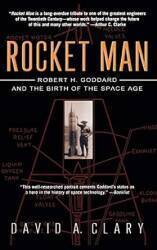

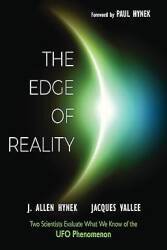
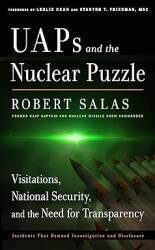
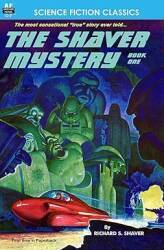
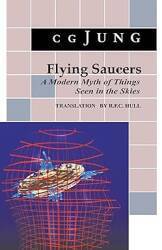
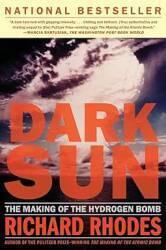


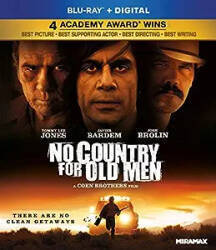
De Forest invented his "Audion" vacuum tube in 1906. The initial 1906 design was a diode, usable as a detector. In 1906 he improved it with a third element. The resulting triode vacuum tube was the first practical electronic amplifier.